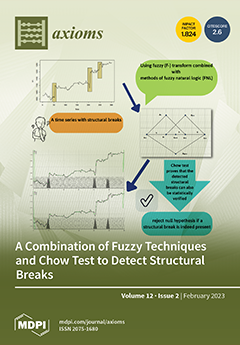If
T is a bounded linear operator on a Hilbert space
and
V is a given linear isometry on a Hilbert space
, we present necessary and sufficient conditions on
T in order to ensure the existence of a linear isometry
[...] Read more.
If
T is a bounded linear operator on a Hilbert space
and
V is a given linear isometry on a Hilbert space
, we present necessary and sufficient conditions on
T in order to ensure the existence of a linear isometry
such that
(i.e.,
extends
T). We parametrize the set of all solutions
of this equation. We show, for example, that for a given unitary operator
U on a Hilbert space
and for the multiplication operator by the independent variable
on the Hardy space
, there exists an isometric operator
such that
extends
T if and only if
T is a contraction, the defect index
and, for some
,
extends the isometric operator
on the space
, where
is the asymptotic limit associated with
T. We also prove that if
T is isometric and
V is unitary, there exists an isometric operator
such that
extends
T if and only if (a) the spectral measures of the unitary part of
T (in its Wold decomposition) and the restriction of
V to one of its reducing subspaces
possess identical multiplicity functions and (b)
for a certain subspace
of
that contains
and is invariant under
V. The precise form of
, in each situation, and characterizations of the minimality conditions are also included. Several examples are given for illustrative purposes.
Full article




